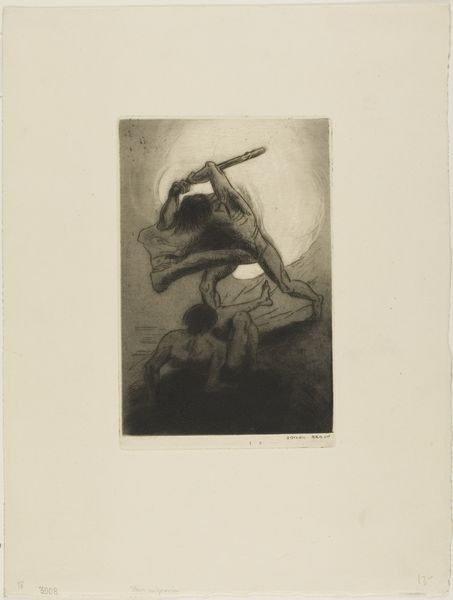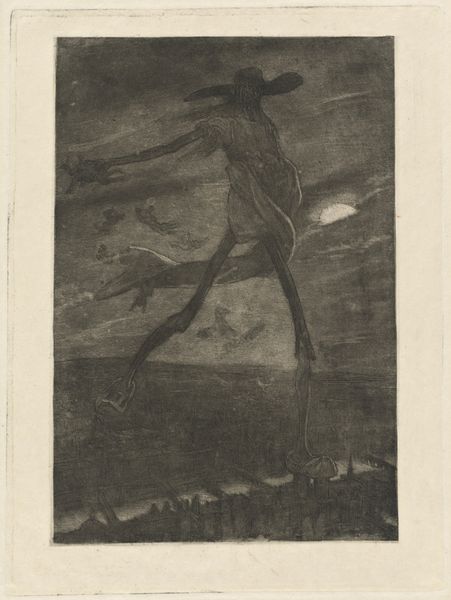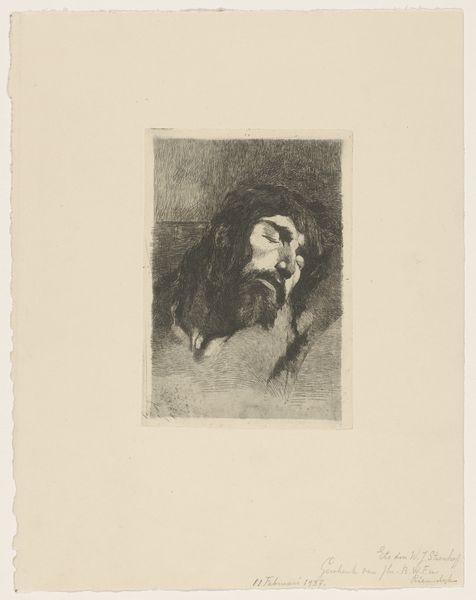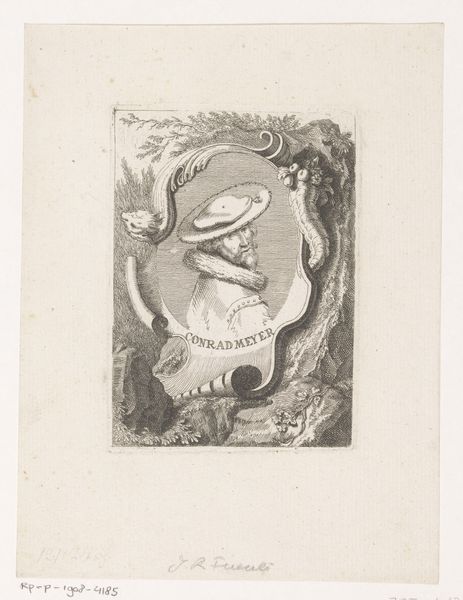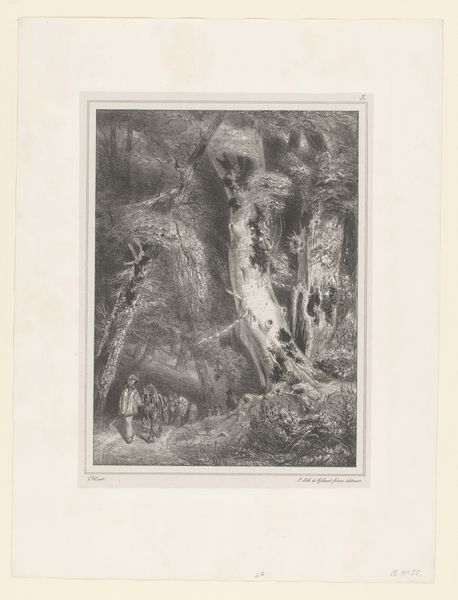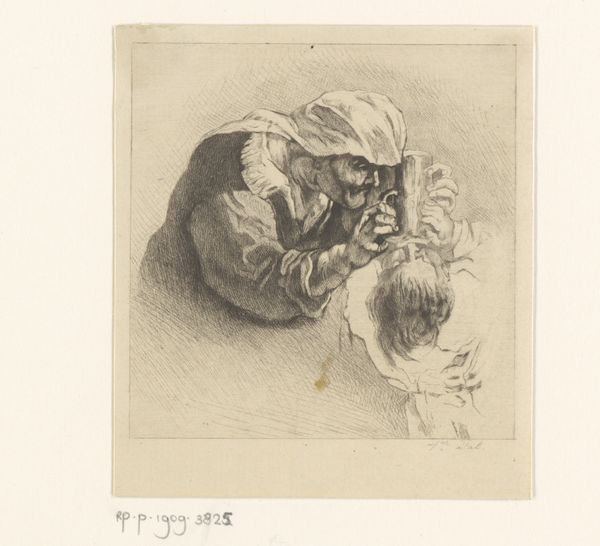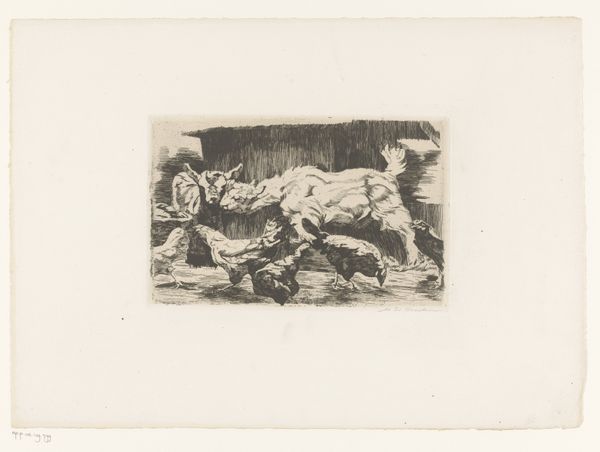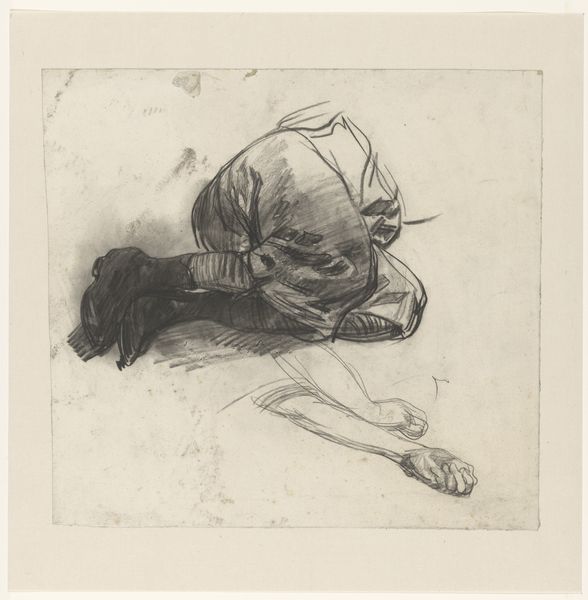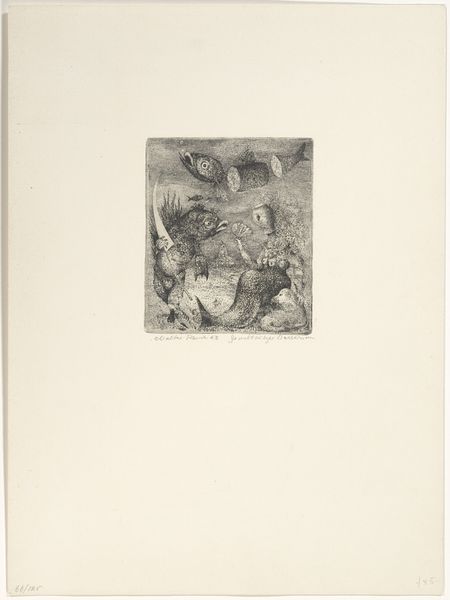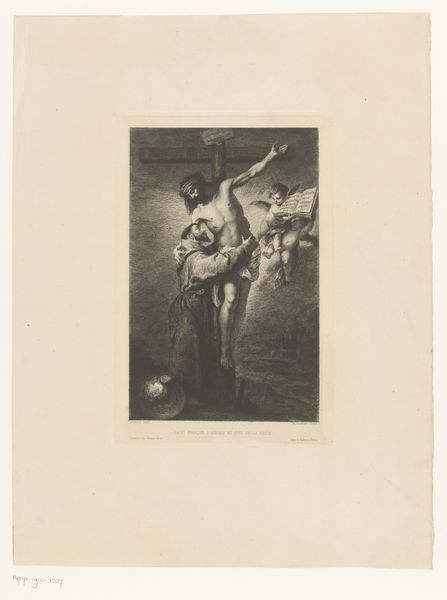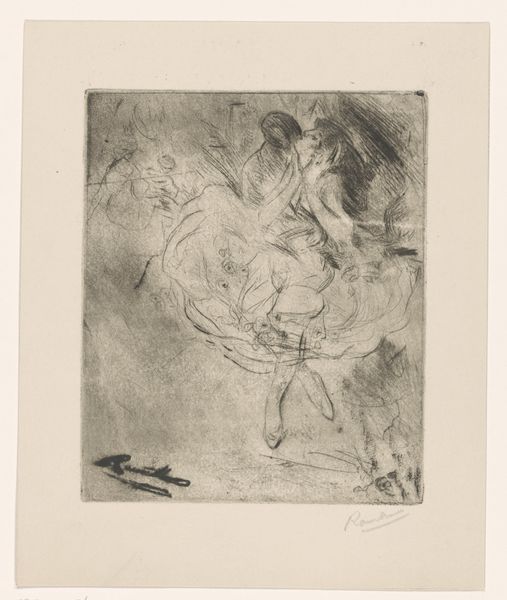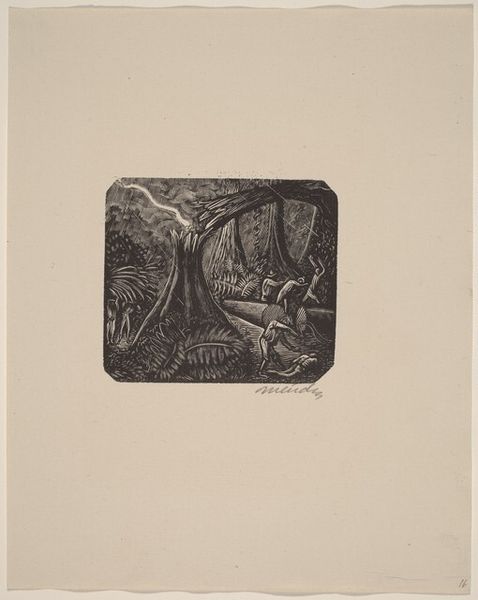
Dimensions: 185 × 121 mm (plate); 308 × 215 mm (sheet)
Copyright: Public Domain
Odilon Redon created this print, Cain and Abel, using etching, a printmaking process that relies on acid to ‘draw’ an image. Redon would have covered a metal plate with a waxy, acid-resistant ground, then scratched the image into that ground with a needle. The plate was then immersed in acid, which bit into the exposed lines, creating recessed areas that would hold ink. The varying depths and thicknesses of the lines in this print suggest Redon used different tools and immersion times. He then wiped the plate, leaving ink only in the etched lines. Damp paper was laid on top, and run through a press, transferring the ink to the paper under great pressure. The result is a delicate, textured image. In this case, the labor-intensive process contrasts ironically with the image: a brutal, rapid act of fratricide. But this connection is key: Redon’s print reminds us that even the most elemental human dramas are mediated by the material world.
Comments
No comments
Be the first to comment and join the conversation on the ultimate creative platform.
